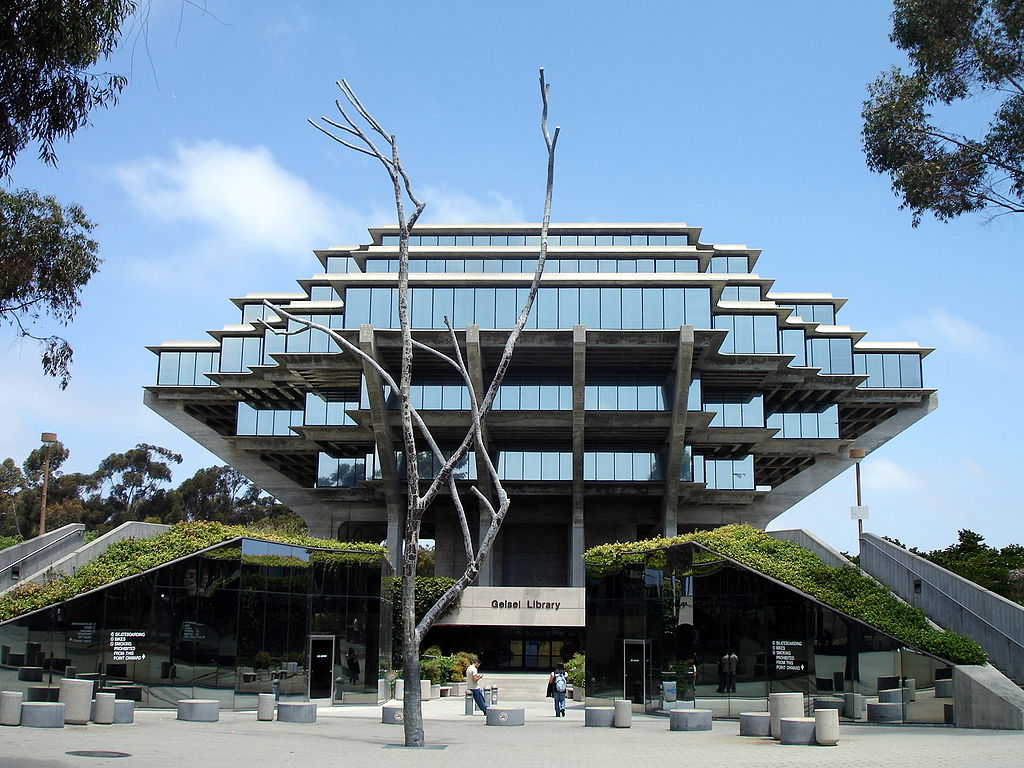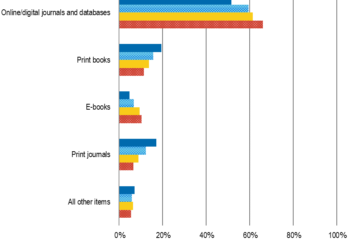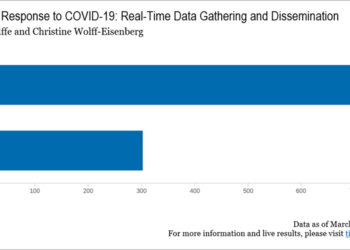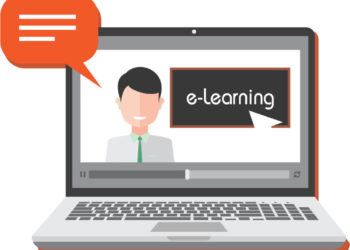As colleges are opening up, and quickly going virtual in some cases, we are entering a very challenging year for the scholarly community. It isn’t at all certain how this academic year will shape up. Institutions are contending with the added costs of keeping students and faculty healthy and safe, while also picking up the added costs of transitioning to a virtual learning environment. In the spring there was much prognostication about the impacts for students. Since then there have been movements to protest the costs of tuition for a virtual learning experience or to protest the fees that universities normally charge. Some students are staying at home, foregoing this year entirely, or at the least not returning to campus and demanding refunds of their rental housing fees. All the while, state and local governments are reducing their budgets, and while government support of higher education has gone down significantly, it remains a significant component of many institution’s budgets. These cuts have pushed much of the costs to students and their families, also increasing inequality. For all this financial hardship, the one place the budget axe shouldn’t fall is the library.

One of the core features of the in-person campus experience is the library. Many institutions feature the library prominently on campus, and many have invested heavily in their libraries as physical meeting spaces. There are so many great, beautiful libraries it is difficult to only highlight a top few. All this investment of physical space belies the fact that libraries are often also deeply technical infrastructure elements in the digital learning environment the campus provides. Many users of library resources, at least on campus, were only vaguely aware of the fact that the services they regularly use are provided by the library because of IP-based authentication. Now that nearly all access is remote access, the provision of library access has become apparent.
Libraries in this particular moment are more vital than ever to the digital learning environment that colleges and universities are seeking to deploy. No one would argue that everything a library provides is available entirely virtually, but an increasingly large amount is. Library acquisition budgets have been tilted in this direction for some time. And realistically, those resources are not free, nor anywhere close to free. One could, and many have, argued that the costs for digital resources is too high. We can save that discussion for another long, long, long Scholarly Kitchen thread.
In this context, users are turning to library resources as much, if not more than ever, in this digital environment. Online usage was up significantly this spring in most institutions and likely will increase more in the fall as the temporary transition to virtual learning takes a more permanent form. The director of a prominent ARL library reported privately that their electronic book purchasing budget increased by more than 230% to support users working remotely who couldn’t obtain physical books. Other budgetary realignments are taking place around the community. Anecdotally, publishers are reporting significant increases in digital resource usage this spring as well. Libraries and publishers are succeeding in their mission of serving their respective communities despite the challenges.
In this world of digital delivery of content and learning, libraries provide critical infrastructure for the academy. The services they provide are no longer just books on a shelf or a computer terminal to write your paper on. Libraries provide access not just to research resources, but also to many of the tools for managing one’s research, reading, and resources. They provide information on impact and assessment. But most importantly, libraries are delivering content to the campus’ students and faculty, underpinning their research. They form the scholarly connective tissue that the entire institution relies upon to function.
As such, library budgets need to be supported and increased, not decreased and more should be done to advocate for this. Although events of 2020 are stressing university budgets like never before, a strong case exists — and it needs to be strongly made — for more funding of libraries. Back in 2012, following the last recession, it was reported that library budgets had fallen as a percentage of institutional expenditures continuing a 14-year trend at that time. The intervening years haven’t shown much improvement and library budgets remained under pressure before the pandemic hit. Because of the COVID-19 pandemic, there will likely be a reprioritization of library services in the new environment including a transition of focus in library acquisitions, library services, and library personnel. But refocusing with less is what libraries have been doing for years up to the point of breaking.
If you look to the broader economy, where there are bright spots, they are mainly confined to those high-tech firms that are providing the digital infrastructure the rest of us need to function in our WFH environment. Many point with excitement to the fact that last week, the stock markets were back above their pre-COVID highs in February. But the majority of the increase has been at the very top-end of the tech sector. In particular, if you strip out Microsoft, Alphabet (i.e., Google), Amazon, Apple, Facebook, and Netflix, the S&P 500 measure of the market would be down by 4%. It is abundantly clear that technology is driving success in the broader market and is being rewarded for making our WFH lives possible. The same should be recognized within the academy.
Libraries are part of the high-tech side of academic institutions that are delivering services to their students. Students and faculty see the value, based on their usage of library services. As such, they need support and the investment that will come along with a realignment of institutional priorities that is a result of this pandemic-induced transformation. Whether these COVID-19 induced changes are temporary or long-term, it should be clear that libraries have been an under-funded corner of the academic landscape. For the success of the faculty and the students working remotely, this needs to change.
Discussion
12 Thoughts on "Investing in Libraries is the Right Thing for Administrators To Do, Even if There Are Fewer Resources Overall"
Todd
A good call. I agree with your points but why is it that research (ours at CIBER for example) shows that libraries and librarians are under appreciated by researchers even more than they under appreciate publishers. It seems to me that one of the reasons is that entities like LIBER and ARL are too busy denying the validity of publishers. I think publishers have stopped denying the validity of libraries – once a position held by some. We know at Charleston that most librarians want to meet vendors of all sorts, as those who exhibit there know, to help them to be useful to the end users.
Anthony, I think it has a lot to do with a misunderstanding by researchers about the role that the library plays in the delivery of the content and the support for the architecture that the librarians provide to the infrastructure. It sort of goes back to the old adage, you don’t care about infrastructure until it breaks. Librarians and publishers have done a lot to make access simple, easy and seamless (See SeamlessAccess.org as one shameless plug!) to the researchers and students. When you don’t see all the work that goes into making something seem effortless, you don’t acknowledge how difficult it was, in reality, to accomplish. If you’re not aware of the work someone is doing behind the scenes to make your life easier, it is little wonder you won’t recognize and honor that work.
Proper funding of libraries is critical, but my experience with researchers may be different from yours. Many resent the fact that librarians push them to publish in venues that are not high prestige and conspicuously branded. The war among some librarians to undermine highly ranked journals is politically maladroit.
I’ve been a reference librarian at University at Buffalo Law Library for 18 years. I’ve never “pushed” a writer to publish in any particular source, and I can’t imagine doing so, especially with our faculty, who are quite savvy in selecting outlets. I have assisted numerous authors in identifying potential outlets for their work, but wouldn’t dream of telling them which ones to select.
My experience is almost identical to Joe’s. I’ve passed along information about reputable alternate publishing venues, and have in a couple cases even encouraged faculty to investigate an option they might not have been aware of. I’ve also been a few times what I know about a particular new journal or publisher that an author (often a graduate student) was considering submitting a manuscript to. But “pushed”? Nope.
Me either; librarians I know all take a neutral position on issues like this.
I think the point Joe raises would be a great full blog post (no, I’m not assigning it to myself!) re how libraries are shaping choice of publication venue through funds that scholars can apply to for APCS (often a no hybrid rule), pure publish contracts, etc. There is at least one OA-only publisher that is pitching their pure publish contract as “yes, you’ll pay more in the first years but as your authors shift to publish with us because it is now free to them – the value you get for the same price will increase!”
For some reason smart people think that that which they know little about is easy. That is why all of a sudden librarians know about .publishing!
I fully agree that libraries “form the scholarly connective tissue that the entire institution relies upon to function” and would add that the wider research infrastructure is the connective tissue that the entire scholarly communications ecosystem relies on. So we need to ensure that this also continues to be supported more, not less, than it is now!
Todd, as a 30+ year sci-tech academic librarian, I agree with _almost_ everything you’ve said above. The “almost” is this bit of your text – “Many users of library resources, at least on campus, were only vaguely aware of the fact that the services they regularly use are provided by the library because of IP-based authentication. Now that nearly all access is remote access, the provision of library access has become apparent.” I agree entirely with the first sentence. But as far as the second sentence is concerned, I’ve seen little change in regard to user awareness, at least in the sci-tech academic community, since everything has been remote. A number of users have lamented not being able to get at physical items because the Libraries are entirely closed, but in terms of electronic content, most users seem no more aware of content being Libraries-provided now than they were pre-pandemic, because, for most of them, nothing has really changed in terms of being able to access digital content. The only time users generally become aware of particular electronic resources being Library-supplied is when their access is disrupted for some reason.
Agreed, I had the same thought when reading the article.
I agree with Mel DeSart’s comments above. The great decamping from campus has not raised understanding of or appreciation for the library’s role in providing access to information, at least among sci-tech users. In fact, I’ve detected a certain level of resentment and disbelief that the library plays any role at all in acquiring or disseminating information. I also have to take exception to Joe Esposito’s comments… I know that there are many OA boosters among academic librarians but I don’t know any who push researchers to publish in specific journals. In fact, I always tell people to publish where you cite, publish where your colleagues read, and publish where it will increase your chances of getting your next grant or position.



